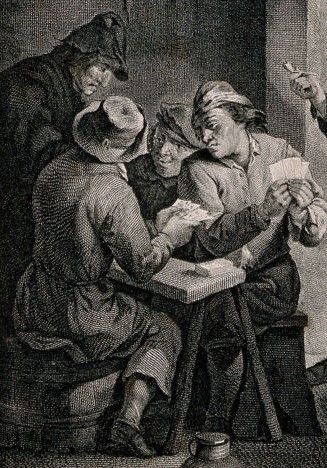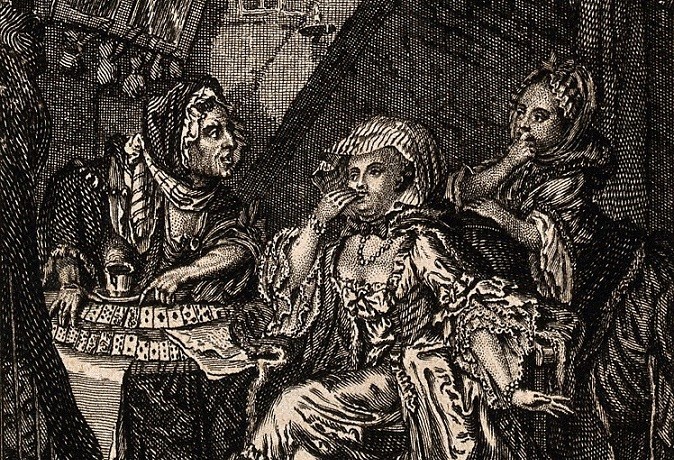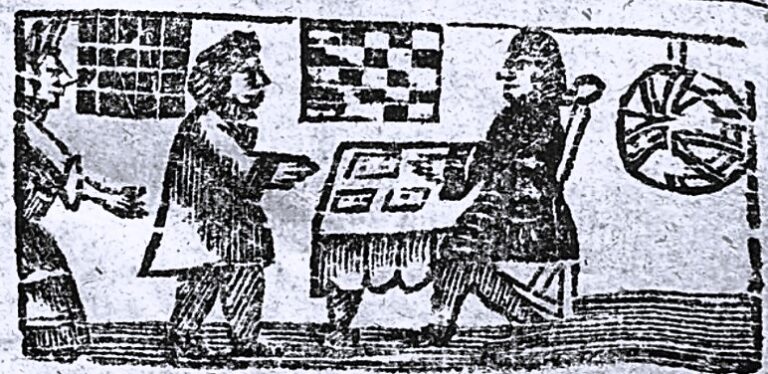Cartomancy was the practice of divining by use of playing cards. It is unclear when cards first began to be used for fortune telling, though cartomancy was well-known by the eighteenth century. Prior to the sixteenth century, playing cards were imported to England from abroad, typically from Germany. From 1550, England began to produce its own cards, and foreign imports were banned in 1684.
Early modern card decks commonly contained between 36 and 52 cards, with four suits and courtly figures as in the modern pack. In early fifteenth-century Italy, additional trump cards were added to the deck, including the Magician, the Emperor, Justice and Death. They were initially used for games such as Bridge rather than for fortune telling.
Depending on the deck of cards, cartomancy worked in different ways. In a plain pack of cards, the number and suit of the card bore meanings, and trump cards (if included) had their own unique message. Oracle cards were designed specifically for the purpose of fortune telling; each card was inscribed with a ‘prophecy’ or message. In eighteenth-century England, manuals were published offering guides on how to interpret playing cards.

Detail from a c. 1778 engraving of men playing cards.1J. Michel after J. Boydell after D. Teniers the Younger (1610-1690), engraving of card players (1778), Wellcome Collection.

Fortune-telling cards printed in London, 1665.2Columbia University Library.

Detail from an eighteenth-century etching of a woman and her maid visiting a fortune-teller.3Wellcome Collection.
Close your eyes, place your right hand on your left breast and say ‘Honi soit qui mal y pense’ (‘Shame be on him who thinks evil of it’). Then click the button below to draw your card. The interpretations are from an eighteenth-century pamphlet published in London.4From Partridge and Flamsted’s New and Well Experienced Fortune Book (London, c. 1760), pp. 3-11. Cards are a late-17th-century deck by Robert Whitfield, courtesy of Paul Bostock, Plainbacks.
Passage from the satirical play Astrologaster (1620), by the merchant John Melton.5John Melton, Astrologaster (London, 1620), p. 42.
Calling for cards, [the wizard] entreated Cuffe to draw out of the pack three which pleased him; [Cuffe] did so, and drew three Knaves. [He] (by the wizard’s direction) laid them on the table again with their faces downwards, and then [the wizard] told him, if he desired to see the sum of his bad fortunes reckoned up, to take up those cards one after the other, and look on the inside of them, and he should be truly resolved of his future fortunes. Cuffe did as he was prescribed, and first took up the first card, and looking on it, he saw the true portraiture of himself cap-a-pie [head to foot], having men compassing [circling] him about with bills [polearms] and halberds. Then he took up the second card, and there saw the judge that sat upon him. At last he took up the last card, and saw Tyburn, the place of his execution, and the hangman, at which he then laughed heartily; but many years after, being condemned for treason, he remembered the fatal prediction of the wizard.

Uncut playing cards from 1610.6Victoria and Albert Museum.

Woodcut showing cartomancy in an eighteenth-century pamphlet.7Title page of Aristotle’s Legacy, trans. Dr Boreham (Newcastle, 1790), Google Books.
